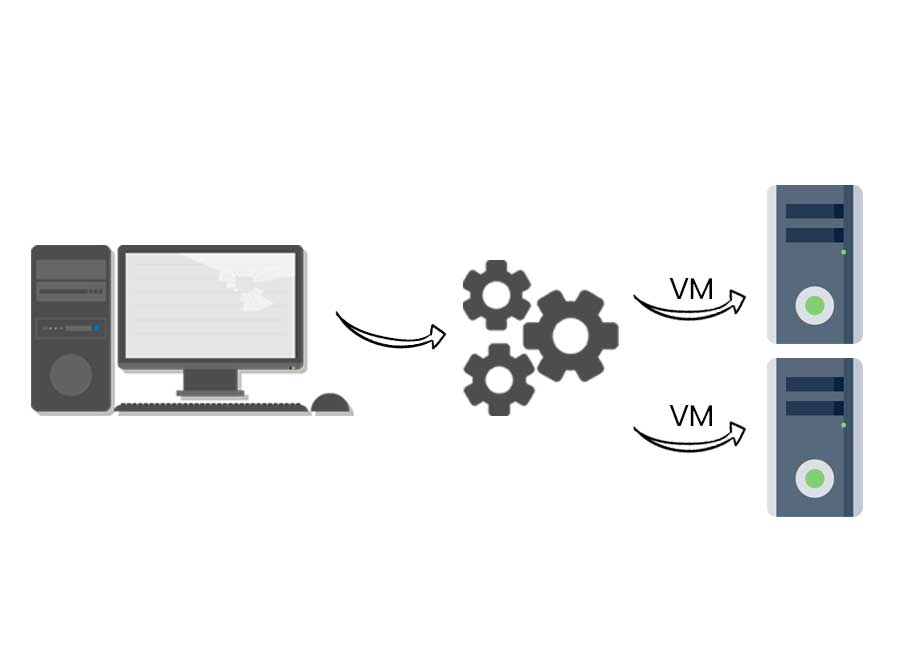WooCommerce or Shopify: Choosing the Right Platform for Your Online Store

Choosing the Right Law Practice Management Software
October 11, 2024
Difference Between Fibers And Threads: A Comprehensive Guide
December 3, 2024Launching or upgrading your online storefront can be intimidating, as it involves many choices, but at the top of that list are Shopify and WooCommerce. Both have their strengths, but how do you know which suits your business?
You already know the strengths both platforms have to offer. Shopify is an all-around solution that’s extremely intuitive in terms of tools meant to get you up and running very quickly, offering great customer support, and with a host of integrated payment options, the go-to solution for most business owners.
However, WooCommerce gives you unmatched flexibility and control. As a WordPress plugin, it enables you to work on every aspect of your store that is uniquely custom-tailored to your needs in running your business. With a huge range that is extremely large, themes and plugins available, for example, building an online shopping experience is best done using WooCommerce.
Each has its own set of features, costs, and potential limitations. So, let’s dive into the details to help you make an informed decision that aligns with your vision for success.
WooCommerce vs Shopify – An Overview
When it comes to eCommerce platforms, the debate will always go down to two titans: WooCommerce and Shopify. Both sites cater differently to business needs and preferences. This is why, therefore, very important to understand.
Indeed, ‘WooCommerce’ is highly acclaimed for its adaptability and flexibility in customization and is WordPress’s extension as well, it offers users multiple opportunities for tailoring the online store in accordance with specific needs. That is a game-changer for businesses stressing branding and unique customer experiences; with thousands of themes and plugins available at hand, one can create a store that reflects his vision.
On the other hand, Shopify does relatively well with its user-friendly approach. It gives the streamlined experience ideal for entrepreneurs to get their stores up and running in the minimum amount of time possible. With built-in hosting plus robust support for any technical hurdle involving managing an eCommerce site, it makes for a pretty attractive option for those who don’t have much time to take an involved hand in the technical aspect of things.
Essentially, the final decision of choosing WooCommerce or Shopify largely depends upon what the business goals are what technical competence is for the merchant, and his expectations from control regarding his online store. Both have their strengths and weaknesses and therefore selecting one that fits properly forms the exact requirement.
Shopify vs WooCommerce: Key Comparisons
Here’s a quick look at the major differences between Shopify and WooCommerce to help you choose the right platform for your business needs.
Ease of Use
Ease of use is an important factor in choosing any of the e-commerce platforms. Two major e-commerce platforms, namely Shopify and WooCommerce, are tailored towards different kinds of users depending on their comfort level with technology.
WooCommerce
WooCommerce, as an open-source WordPress plugin, offers a flexible yet technical experience. It is best suited for people who wish to have full control over customization on their store with no problem in handling a few technical issues such as hosting, security, and updates. The initial setup involves multiple steps ranging from buying a domain, setting up hosting, and installing WordPress, to integrating WooCommerce. After this, WooCommerce uses themes and plugins for endless customizable abilities but takes much more direct managing as compared to Shopify. Those who love fine-tuning every detail of their shop would love WooCommerce.
Shopify
Shopify is made for ease and simplicity and is perfect for beginners. It’s a one-stop-shop solution; you will not have to go digging for hosting or security management. Shopify has an interface that enables easy, quick setting up of your store with drag-and-drop features and using ready-made templates, but the closed ecosystem restricts as much customization as possible, compared to using WooCommerce. While Shopify is good for those who want to get off the starting blocks quickly, its simplicity also comes at the expense of flexibility.
Payment Methods
Payment flexibility can make or break your store’s success, as customers expect multiple options for completing their purchases.
WooCommerce
WooCommerce is at the forefront when discussing payments. For starters, it supports all major payment gateways. The service also accommodates numerous international payment methods. There will be no transaction fees charged by WooCommerce over and above the regular charges by your payment processor. This means you can offer a wide range of payment methods to your customers without platform costs on top, making WooCommerce a very flexible and cost-effective option for global sales.
Shopify
Shopify has a payment gateway called Shopify Payments, that is pretty easy to work with and simplifies things. Otherwise, if you choose to use a third-party payment processor, Shopify imposes extra transaction fees, which can add up, especially for high-volume stores. But of course,, Shopify plays nice with some of the largest third-party payment processors; however, it will end up costing you more in the long run due to those extra fees. For a smooth payment configuration, Shopify Payments is the way to go; however, anyone who is looking to save some money has much flexibility with WooCommerce.
Integrations and Add-ons
Both Shopify and WooCommerce offer a variety of apps and plugins to expand store functionality, but how they do so differs significantly.
WooCommerce
The open-source nature of WooCommerce means theoretically that you can integrate just about anything. Starting from SEO and email marketing to shipping and accounting, WooCommerce provides a plugin ecosystem for nearly any need. Being rather flexible, you can adapt your store to precisely meet your business needs. With an array of vast plugins in the marketplace, WooCommerce lets you find particularistic tools that can enhance the performance and experience of your store for customers.
Shopify
Shopify has a really big and strong app store with many integrations- which makes adding functionality to your store pretty easy. Many of them are paid though which sets up higher prices for overall orders. Shopify’s apps are flawless, but you are held by the options that are provided for download in the app store. So if you are trying to do something extraordinary, you might feel restricted. Shopify has streamlined its ecosystem, but as your business grows in size, add-ons can get expensive quickly, especially if you are using a lot of them.
Dropshipping
Dropshipping is a popular business model that lets you sell products without holding inventory. Both platforms cater to dropshippers, but in different ways.
WooCommerce
With WooCommerce, dropshipping shines in flexibility as it integrates with suppliers of all kinds. One may hook up to multiple suppliers using different plugins, such as AliDropship and WooDropship, which can automate the whole process. Being open, WooCommerce ensures you have a choice between thousands of dropshipping partners and get to customize the fulfillment process to your liking as much as possible. You can opt for established suppliers or niche vendors- WooCommerce gives one the flexibility to shape his dropshipping venture according to one’s specific needs.
Shopify
Shopify has built a reputation as a dropshipping-friendly platform, mainly due to its partnerships with apps like Oberlo and DSers, which simplify product sourcing and fulfillment. Starting a dropshipping store has become very easy via Shopify with a few clicks needed through reliance on apps that will then take care of inventory, order tracking, etc. But Shopify is also very dependent on some of the dropshipping there’s a limitation in the sense that you’d get bound with certain suppliers or fulfillment models. The greatest solution for quick scalability but it can be a little bounded scope as compared to what WooCommerce offers.
Scalability and Growth Potential
Every business aims to grow, and your platform should support that growth without causing bottlenecks.
WooCommerce
WooCommerce is very scalable in the sense that growing a business without boundaries. Since it is built on WordPress, adding new features is relatively easy to do and scale up your site as you increase traffic. With the right hosting, WooCommerce can easily support thousands of products and sell thousands in sales volume. Further, being versatile makes it very easy to scale up by loading in advanced features, customizing your store, and optimizing its performance with a plethora of plugins.
Shopify
Shopify is great for scalability because it offers a fully hosted platform that grows with your business without any technical hassle. Its cloud system ensures your site can handle lots of traffic and large sales smoothly. With Shopify, you don’t have to worry about managing servers or technical details, as everything is taken care of. Although its pricing increases as your business expands and you may need additional apps, these costs help keep your store running efficiently. Shopify makes it easy to scale up without complications, letting you focus on growing your business.
Shopify Pros and Cons
Shopify has become a leading platform for e-commerce businesses due to its comprehensive solutions and ease of use. However, like any platform, Shopify comes with its strengths and limitations. Here’s a closer look at the key pros and cons of Shopify.
Pros
Simple Setup and User-Friendly Interface
One of the huge wins for Shopify is that it’s effortless to set up your store, even if you are not a computer nerd. To be honest, setting up and customizing your online store is drag-and-drop easy to do, coding required! With Shopify, you can build your professional-looking storefront with their pre-designed templates in no time!
All-in-One Solution with Hosting and Security
Shopify makes everything in an all-in-one package. From hosting to security, it will all be taken care of for you. Forget multiple services management—Shopify takes care of payment gateways, security (SSL encryption, anyone?), and website hosting, so you can work on what matters: growing your business. In one place, everything is perfect for business owners who do not want to be concerned with the technical details but still require a solid, secure foundation.
24/7 Customer Support
One more brilliant advantage of Shopify is 24/7 customer support. Do you have a question at midnight? Don’t worry! If you have a question about the setup of your store or how to fix or change something, Shopify’s support team is just a click or call away. Shopify has live chat, email, and even a facility for direct phone communication. And of course, there is also this enormous community of users where you can seek advice and guidance from one another. It’s just like having a band of experts on call 24/7.
Robust App Ecosystem
With the Shopify app store, you also get supercharged tools for your store. Need help in SEO and optimizing shipping, email marketing, and customer reviews? Of course, there’s an app for that. You can customize your store with thousands of apps designed to meet all kinds of business needs so that your store evolves as your business does. This flexibility ensures that Shopify scales with you no matter what you’re selling and wherever you’re selling it.
Reliable Payment and Sales Channels Integration
Shopify makes it possible to sell on multiple fronts: it allows selling through your website and social media channels like Facebook, Instagram, or even TikTok. It is perfect for businesses that need to expand their reach without having different tools to handle that. Shopify Payments has seamless native integration, but you can also connect to popular payment options including PayPal or BNPL solutions like Afterpay. Such flexibility enables you to accept payments worldwide and accommodate your customer’s preferences.
Cons
Limited Customization in a Closed Ecosystem
Yet Shopify is a very user-friendly platform, though it does have its limitations for those who desire more advanced customization. As Shopify is a proprietary coding language, Liquid, you’ll likely require a developer who understands it if you need to dig deep into custom features. Where easier customization of your store comes easy, changes with layout or functionality might require more effort and professional help, which will add to your cost.
Higher Costs with Subscription Plans and Transaction Fees
Shopify’s pricing can add up, especially if you need multiple apps or advanced features. While the basic plan starts at $39/month, many key features like SEO tools or enhanced email marketing—come with extra fees. On top of that, Shopify charges transaction fees if you don’t use Shopify Payments. All of this can impact your bottom line, so businesses need to be mindful of the long-term cost of running a Shopify store.
Data Ownership and Flexibility Limitations
Shopify is a sort of closed system, so you do not fully own or control all your data. Exporting everything could also be an issue if you decide to switch platforms. You can export product data in CSV format but other attributes such as theme settings and customizations aren’t that easy to move.
WooCommerce Pros and Cons
Pros
Complete Control Over Customization and Features
WooCommerce stands in high respect for ensuring you have complete control over the customization of your store. It’s perfect for businesses interested in having a unique shopping experience that reflects their brand in as unique a way as possible, without any pre-built templates binding them down. Whether you are a developer or are working with one, you can create custom designs and accomplish complex functionalities with WooCommerce.
Cost-effective for Small and Medium Businesses
For users who are already running on WordPress, WooCommerce is actually very cheap in transforming your website into a complex and strong online store. The free core system sets you back nothing, but plugins or premium themes will be an additional cost once your business grows. Thus, this is a wise choice for small and medium businesses as it allows you to scale up at your own pace and do not get locked into an expensive plan.
Massive Plugin and Theme Ecosystem
WooCommerce boasts an extremely vast ecosystem of plugins and themes. Need a sophisticated marketing tool, better SEO, or smoother payment gateways? There’s a plugin for all of that. Want to give your store a new look and feel? Simple enough with the wide variety of themes available. Whether you are a startup business or a large enterprise, WooCommerce’s strong ecosystem of plugins means you’ll have everything you need to enhance and streamline your store.
Cons
Steeper Learning Curve and Technical Requirements
WooCommerce brings out much flexibility, which requires much more technical expertise. To set up and run your WooCommerce store, one must be familiar with WordPress. For any advanced features or a unique design, it would become necessary to hire a WordPress developer. However, for a non-technical person, building a store precisely to their likeness can be moderately fiddly and timely, and without qualified assistance, there is hardly any possibility of running everything properly.
Self-Managed Hosting and Security
Unlike all-in-one platforms, WooCommerce provides an absolute choice of hosting and security. It might be a godsend, but it might also prove to be a chore. You have the liberty to select a hosting provider for your online shop, and you can opt for the one that best fits your store’s needs and budget, though it does demand more active management to gain superior security and performance.
Hidden Expenses
Though WooCommerce has a low entry cost, as the store matures you would likely use premium plugins, themes, and ongoing maintenance to keep things running smoothly. These costs will never be wasted but invested in those added advanced features and support that will place your store above the rest. By having a developer or maintenance service, these investments ensure that your store stays ahead of the competition by offering more advanced functions and a smooth customer experience.
Poor Updating Policies
WooCommerce’s update process can be tricky. Since it relies on different plugins and themes, you need to be careful when updating to avoid issues. It’s a good idea to test updates in a safe environment first to make sure everything works properly. This extra step can make WooCommerce feel less reliable compared to platforms like Shopify, which handles updates more smoothly.
Lower Market Share
WooCommerce isn’t as popular as big platforms like Shopify, Amazon, or Alibaba. One reason is that WooCommerce only works with WordPress, which limits its reach compared to these bigger platforms that are more widely used.
Which One is Better for Your Online Store?
Choosing between Shopify and WooCommerce depends on your needs and skills. Shopify is great for those who want an easy, all-in-one solution without worrying about technical stuff, but it has fewer customization options and can get pricey as you add features. WooCommerce offers more flexibility and control but requires some technical knowledge or help from a WordPress developer. Shopify works well for small to medium businesses looking for a quick, managed setup, while WooCommerce is ideal for those who want full control and long-term growth potential.
Conclusion
Choosing between WooCommerce and Shopify depends on your business needs and technical expertise. Both platforms offer unique features, so consider your goals and priorities to make the right decision for your online store.




